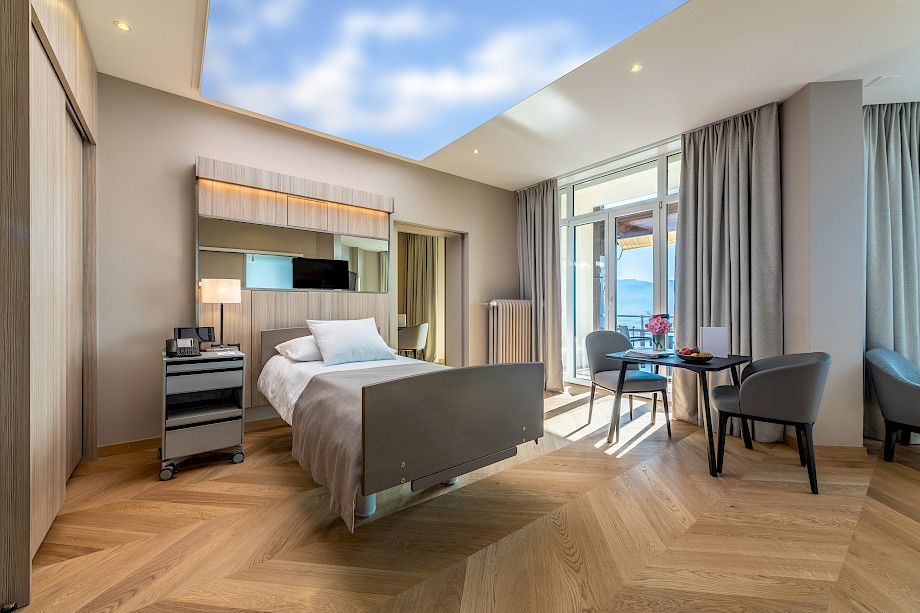close search
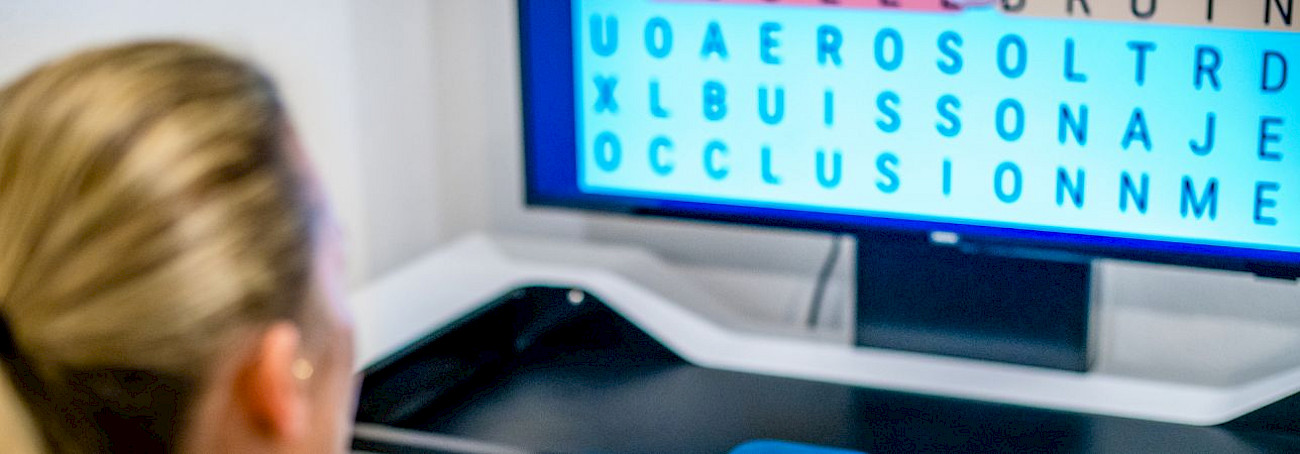
In recent years, the Clinique Valmont has acquired a number of innovative training devices specific to neurological and orthopaedic rehabilitation.
Based on the differential pressure technology developed by NASA, the Alter G is a treadmill for rehabilitation with reduced body weight.
The patient's legs are isolated in a sealed enclosure, capable of reducing the body weight by up to 80 %. The patient can thus walk in a state of micro-gravity in order to reduce joint constraints, minimise impact phenomena and facilitate movements.
Contrary to standard weight-lifting devices (lifting harnesses, balneotherapy, etc.), the Alter G allows you to define the exact point where exercise is pain-free. This makes movement easier and walking possible again.
The Alter G can be integrated into the orthopaedic rehabilitation process (injury, sprains, muscle damage, hip, knee, ankle or foot surgery) as well as neurological rehabilitation (paraplegia, hemiplegia).
Neurological rehabilitation - relearning to walk with the Alter G anti-gravity treadmill
Orthopaedic rehabilitation - defy the forces of gravity with the Alter G treadmill
Developed by the Belgian start-up Axinesis, the REAplan device is a robotic medical assistance device whose objective is to interactively mobilise the upper limbs of patients in order to increase the recovery of their motor skills. To do this, the patient holds a distal end effector (a handle), which will move the arm in a horizontal plane, the intensity, force and speed of which can be set.
REAplan is customised to each patient's motor deficiencies and is continuously adjusted according to the patient's performance and recovery progress. Three different modes exist:
What makes it special? The device is equipped with a large flat screen, which allows the patient to benefit from audio-visual feedback.
The REAplan technology is primarily intended for brain damaged patients undergoing neurological rehabilitation. In the event of a stroke, neurons are irreversibly damaged and die, leading to the appearance of after-effects. Today we know that the brain is capable of plasticity: the remaining neurons have the capacity to reorganise themselves and remodel their connections in order to compensate for the deficits caused by the stroke. Intense repetition of certain movements leads to a phenomenon of brain plasticity around the lesion, which will promote relearning and the recovery of lesions.
" The REAplan is an innovative tool, which allows us to offer our patients the best technologies available on the market in order to accelerate the recovery of their abilities" Maud Ismail, Head of theOccupational Therapy Department at the Clinique Valmont.
The Clinique Valmont is the first establishment in Switzerland to be equipped with the REAplan device.
The REAplan medical robot, exclusive to the Clinique Valmont
Created by MindMaze, a company based in Lausanne, the MindMotion GO is an innovative device offering playful therapeutic training for physical and cognitive rehabilitation. Used for people suffering from neurological (stroke, Parkinson's disease, multiple sclerosis) or orthopaedic (prostheses) damage, it can be used to train the upper limbs, lower limbs, hands and trunk.
In concrete terms, MindMotion GO consists of a large screen and cameras, in front of which the patient is positioned. The patient participates in therapeutic video games using only body movements.
No joystick or controller is required. When the exercises are performed, the device automatically follows the patient's movements with the help of cameras (tracking). Thus, the exercises offered require active participation from the patient.
The activity programme is fully personalised by our therapists, according to the objectives of each patient. In addition, the therapists have access to a detailed dashboard that allows them to monitor the patient's progress as well as the quality and quantity of movements performed.
«We are really pleased to have been able to acquire the MindMotion GO, an innovative and fun device, which allows us to demonstrate once again the visionary and innovative nature of the therapies offered at the Clinique Valmont.» Maud Ismail, Head of the occupational therapy department at the Clinique Valmont.
MindMotion GO, an innovative and playful approach to rehabilitation
In the event of a stroke or cerebral haemorrhage, the brain is deprived of oxygen and can be irreparably damaged. Two out of three people then suffer a severe loss of motor skills.
Aware of this major health issue, the Clinique Valmont has acquired the Lyra training device from the company THERA-Trainer. Specially developed to facilitate walking rehabilitation, it enables stroke victims to recover motor skills that were previously difficult to obtain. The Clinique Valmont was the first establishment in French-speaking Switzerland to acquire this device.
Rapid, intensive and repetitive stimulation of motor skills is a key factor in successful rehabilitation. The Lyra device allows the recreation of the movement of walking, while respecting a level of intensity adapted to each patient. Through this effective therapy, patients are supported in every phase of their rehabilitation and regain mobility and endurance in their daily lives.
Other neurological diseases or conditions also benefit from the advantages of the Lyra device, such as Parkinson's disease, spinal cord injuries or multiple sclerosis.
Clinique Valmont: regaining mobility with the Lyra Gait training device
Clinique Valmont: revolutionary motor rehabilitation with the Lyra Gait training device
This brand new innovative rehabilitation device called IVS3 for Intensive Visual Simulation 3 is dedicated to the treatment of patients suffering from stroke, chronic pain (algodystrophy), or phantom limb pain. The IVS3 device generates visual illusions based on the movements of the healthy limb. The environment replaces the image of the paralysed arm with a positive image of movement created from the healthy arm. For paralysed patients, it is indeed very difficult to relearn a movement with permanently negative feedback.
Thanks to brain plasticity and by reinstating coherence between what the patient wants to do and what he perceives, the flow of illusions favours re-learning and motor recovery.
An algorithm based on artificial intelligence also offers an evolutionary process: the device learns to recognise the exercises best suited to the deficiencies and progress of each individual.
This equipment makes it possible to increase, diversify and personalise the rehabilitation work of patients, from their entry into the clinic until their return home.
"With this machine, it is the healthy arm that is filmed. The screen covers the entire field of vision of the patient, so the visual illusion of the movement of the injured arm is multiplied.In this way, we can train the functionality of the upper limbs of patients suffering from stroke, or other neurological pathologies such as multiple sclerosis or Parkinson's disease. Maud Ismail, Head of the occupational therapy department at the Clinique Valmont.
Clinique Valmont: innovative upper limb rehabilitation with IVS 3
Recover the sensitivity and motor skills of your arm with the IVS 3 at the Clinique Valmont
The VitalStim is an electrotherapy device used in the rehabilitation of swallowing disorders (dysphagia). It provides non-invasive, sensitive or sensory-motor stimulation of the structures involved in swallowing, which stimulates the swallowing reflex and accelerates the recovery process.
The stimulator's screen continuously displays the electrical activity of the muscle, which is also converted into sound signals. This makes the rehabilitation sessions interactive, allowing the patient to have visual and auditory feedback on their swallowing.
VitalStim - swallowing disorders rehabilitation at the Clinique Valmont
Thanks to the acquisition of a 3D printer, the occupational therapists of Clinique Valmont now have the possibility of printing personalised technical aids directly within the clinic.
In the context of rehabilitation, occupational therapists sometimes recommend the use of aids to facilitate everyday actions for their patients. They usually order technical aids from a catalogue, which sometimes do not perfectly meet the needs of the patients and their lifestyle.
And this is where 3D printing makes the difference.
The occupational therapist has the possibility to create a prototype that is perfectly adapted to the patient's needs and to print it directly in the clinic.
By choosing a technical aid from a catalogue, it is up to the patient to adapt. With 3D printing, the tool adapts to the patient.
Currently used by the occupational therapists, 3D printing could also be developed by the physiotherapists and speech therapists.
3D printing at the service of the patients of Clinique Valmont (video in French)
For several months now, the Clinique Valmont has been offering its patients medical hypnosis using the HypnoVR virtual reality headset.
The virtual reality headset offers a unique multi-sensory therapeutic immersion experience, combining hypnosis sessions dedicated to the treatment of pain and anxiety.
HypnoVR has two main objectives:
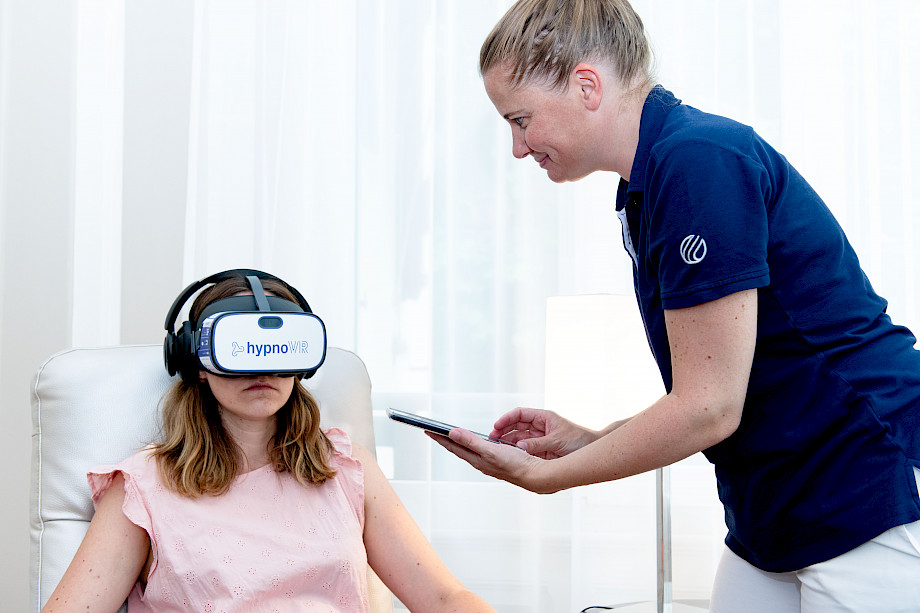
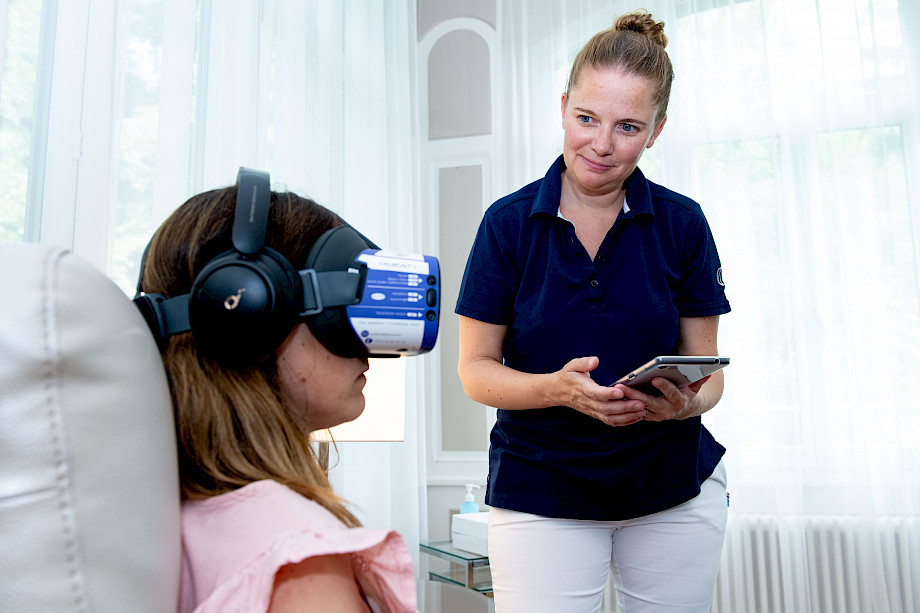
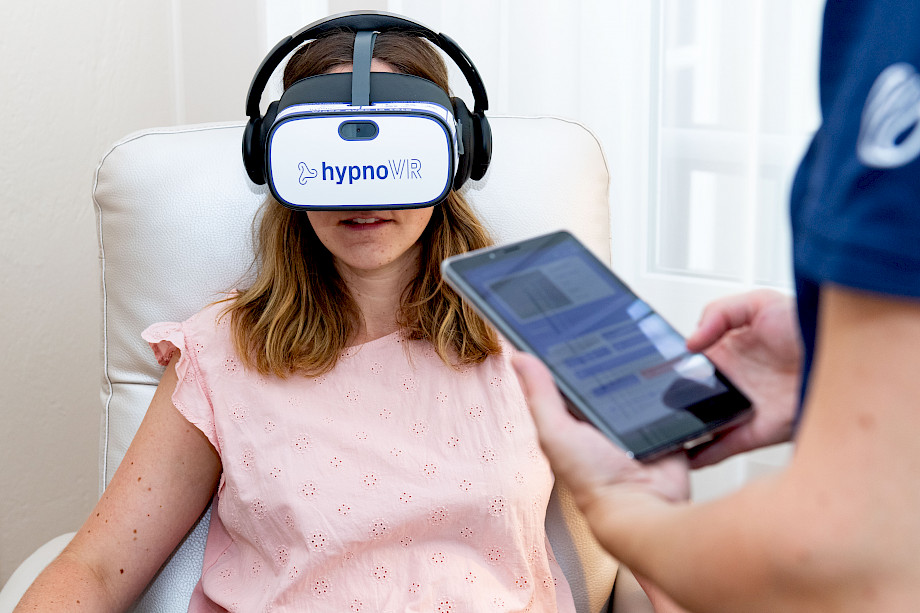
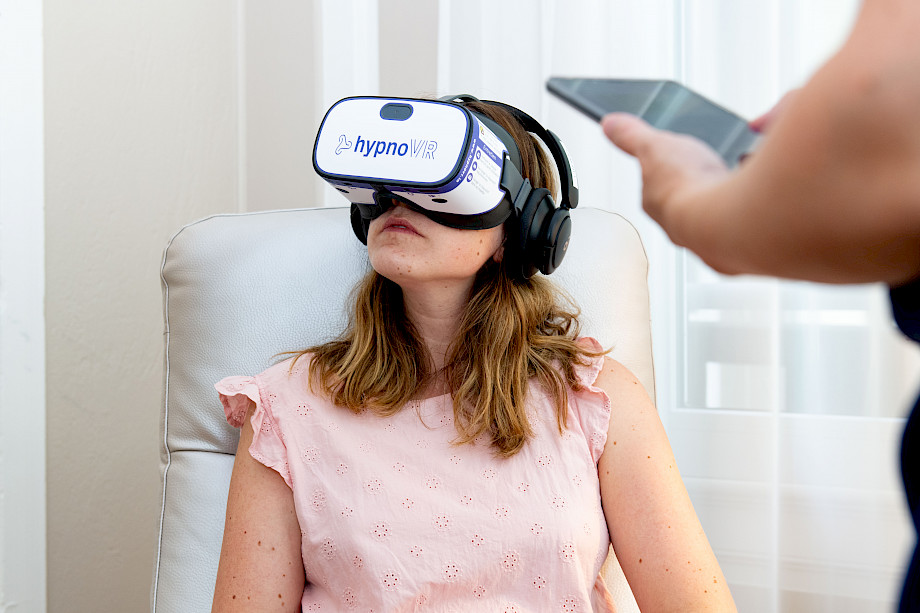
Philips VitalSky is a light therapy system that simulates natural light, designed to restore the balance of an individual's sleep/wake cycle, also known as the circadian rhythm. The diffusion of natural light serves to suppress the production of melatonin, the «sleep hormone» naturally produced by the body to regulate biological rhythms. Indeed, melatonin secretion is limited when there is light and stimulated when it is dark.
While providing a soothing and pleasant environment, the VitalSky system has an automated day/night programme that can be adapted to each patient, depending on their age or the length of their stay in the clinic. The lighting programmes and settings allow for high levels of illumination during the day and low levels during the night to create an appropriate circadian rhythm for the patients.
In practice, the cycle begins with the wake-up phase, which simulates dawn and initiates a gradual awakening. This is followed by the high-intensity phase, from about 10:00 to 16:00, which aims to boost the energy of each individual. The last stage is marked by a decrease in brightness, with the aim of preparing for bedtime at around 22:00. The cycle is of course customisable to suit individual needs.
In addition to white light, VitalSky can also play nature-themed colour videos to create an immersive and pleasant environment for the patient.
Testimonial
«Beautiful room with light therapy. It is very effective and helps restore sleep. Thank you to the Clinique Valmont for giving me the opportunity to try this therapy and to stay in this room.» Géraldine G.
